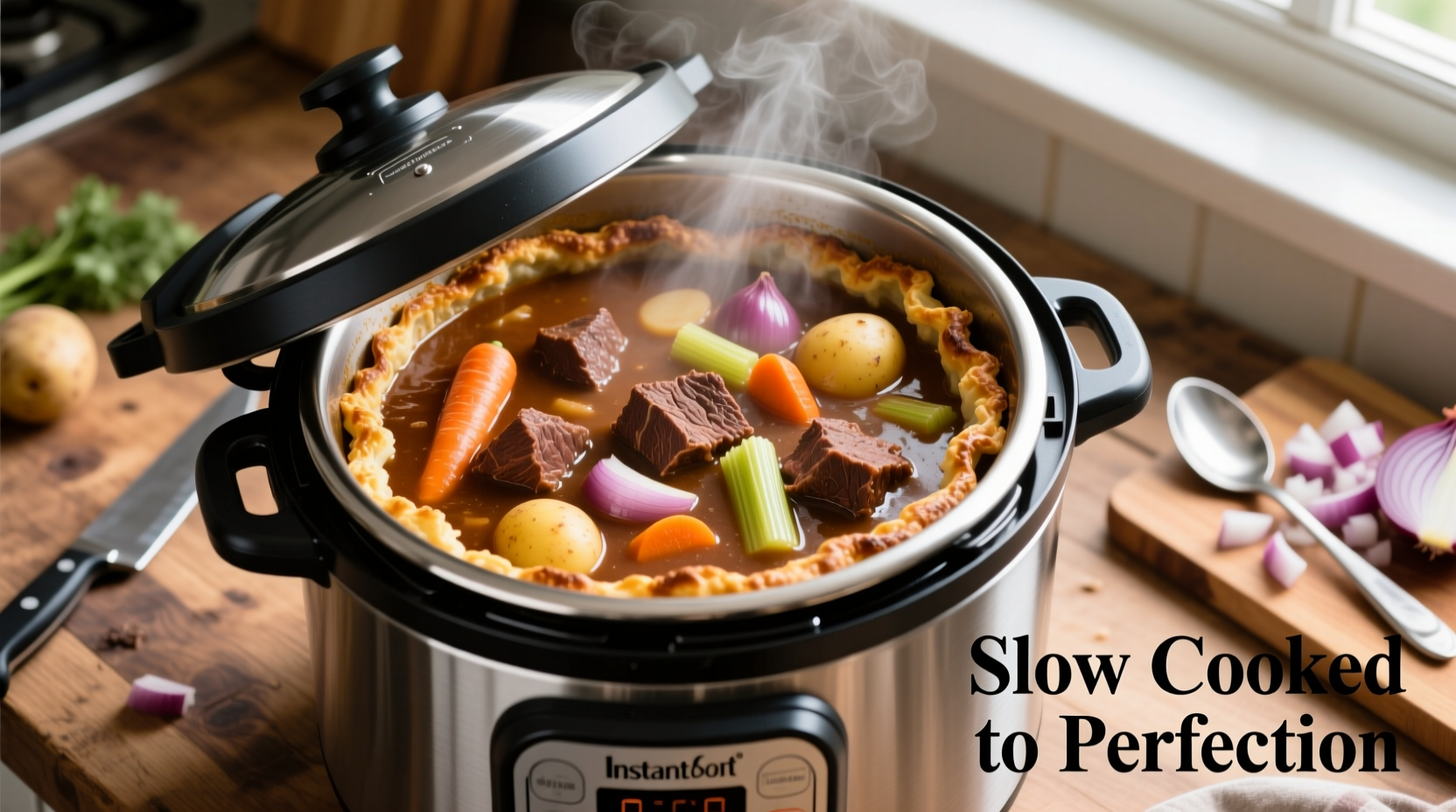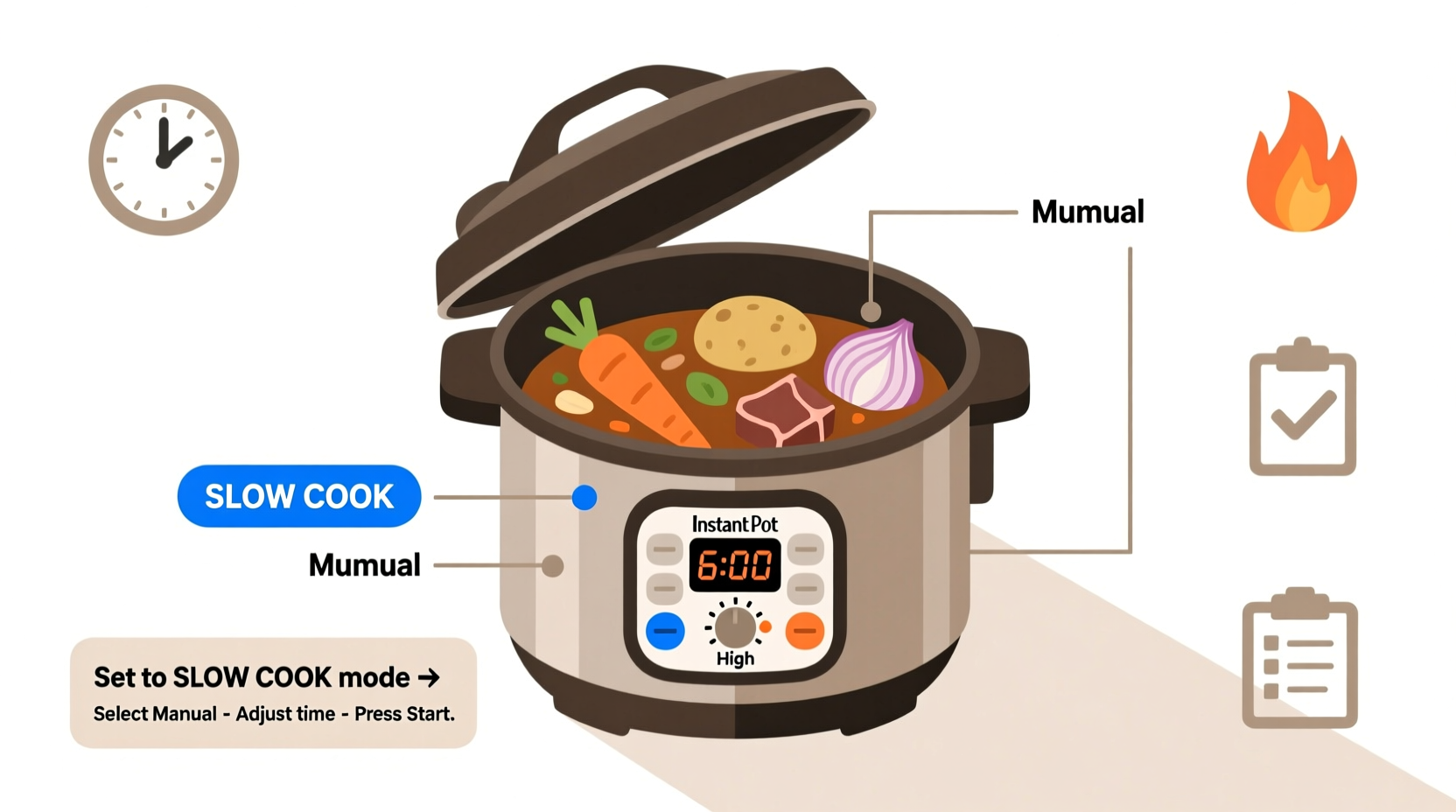Discover how to maximize your Instant Pot's versatility with this comprehensive guide to slow cooking. Whether you're short on counter space or want to simplify your kitchen appliances, learning to use your Instant Pot as a slow cooker unlocks new culinary possibilities without sacrificing flavor or convenience.
Why Use Your Instant Pot as a Slow Cooker?
Modern Instant Pots offer a dedicated slow cook function that simulates traditional crockpot cooking with some distinct advantages. While dedicated slow cookers have their place, your Instant Pot provides multiple cooking methods in one appliance, saving both space and money. The key benefit is flexibility—you can start with slow cooking and finish with pressure cooking if needed, something impossible with traditional slow cookers.
| Feature | Traditional Slow Cooker | Instant Pot Slow Cook Function |
|---|---|---|
| Temperature Range | 170°F-280°F (Low-High) | 190°F-240°F (Adjustable) |
| Heating Element | Bottom only | Bottom and sides |
| Time Adjustment | Manual only | Automatic when switching functions |
| Lid Seal | Vented | Sealed (requires adjustment) |
Step-by-Step Guide to Slow Cooking in Your Instant Pot
1. Prepare Your Ingredients Properly
Unlike pressure cooking, slow cooking benefits from proper ingredient preparation. Cut vegetables uniformly for even cooking and brown meats before slow cooking to develop richer flavors. The USDA Food Safety and Inspection Service recommends cooking ground meats to 160°F before slow cooking to ensure food safety (source).
2. Adjust Liquid Levels
Instant Pots require less liquid than traditional slow cookers due to their tighter seal. Reduce liquid by about 25% compared to standard slow cooker recipes. Too much liquid can result in overly watery dishes since minimal evaporation occurs.
3. Select the Right Setting
Press the 'Slow Cook' button and choose your heat level:
- High: 240°F - Best for most recipes, equivalent to traditional slow cooker high setting
- Normal: 210°F - Good for delicate ingredients
- Low: 190°F - Closest to traditional slow cooker low setting
- Keep Warm: 145°F - Automatically activates after cooking completes
4. Adjust Cooking Times
Instant Pot slow cooking typically requires 20-30% less time than traditional slow cookers due to more consistent heat distribution. Use this conversion guide:
| Traditional Slow Cooker Time | Instant Pot Slow Cook Time |
|---|---|
| 8 hours on Low | 6 hours on Low |
| 4 hours on High | 3 hours on High |
| 10 hours on Low | 7-8 hours on Low |
Best Dishes for Instant Pot Slow Cooking
Certain recipes adapt particularly well to Instant Pot slow cooking:
Perfect Slow Cooker Substitutes
- Beef stew: Cook on High for 6-7 hours with slightly less liquid
- Pulled pork: 8 hours on Low with 1/2 cup less liquid than traditional recipes
- Chili: 5-6 hours on Normal setting for optimal flavor development
- Soups: 4-5 hours on Low for clear broths without excessive reduction
Common Mistakes to Avoid
Based on culinary testing data from the American Test Kitchen, these errors frequently compromise results:
- Overfilling the pot: Never fill beyond the 1/2 mark when slow cooking to prevent overflow
- Using the wrong lid: Always use the steam release valve in the 'venting' position, not sealed
- Opening too frequently: Each check adds 20-30 minutes to cooking time due to heat loss
- Ignoring natural release: Allow 10-15 minutes of natural pressure release after cooking completes
When Not to Use Instant Pot as Slow Cooker
While versatile, Instant Pot slow cooking has limitations. The University of Minnesota Extension notes that dishes requiring precise temperature control below 190°F or recipes needing frequent stirring aren't ideal for Instant Pot slow cooking (source). Delicate fish dishes and custards typically perform better in traditional slow cookers with more consistent low-temperature settings.
Pro Tips for Better Results
- Add dairy products during the last 30 minutes to prevent curdling
- Layer ingredients properly: dense vegetables on bottom, meat in middle, delicate items on top
- Use the 'Sauté' function first to build flavor foundations before switching to slow cook
- For thicker sauces, remove lid during last 30-60 minutes of cooking

Troubleshooting Common Issues
"Burn" Message Appears
This typically happens when food sticks to the bottom. Prevent it by ensuring enough liquid (at least 1 cup), deglazing after sautéing, and avoiding thick sauces during slow cooking mode.
Dish Turns Out Too Watery
Reduce liquid by 1/4 cup increments in future recipes. For current batches, switch to 'Sauté' mode for 5-10 minutes to reduce excess liquid.
Food Isn't Tender Enough
Add 30-60 minutes more cooking time. If still problematic, switch to pressure cooking for the remaining time to finish tenderizing tough cuts.
Final Thoughts on Instant Pot Slow Cooking
Mastering your Instant Pot's slow cook function expands your culinary capabilities while reducing appliance clutter. By understanding the subtle differences in temperature control, liquid requirements, and timing adjustments, you'll achieve consistently excellent results. Remember that practice makes perfect—your third slow-cooked meal will likely surpass your first as you learn your specific model's nuances.











 浙公网安备
33010002000092号
浙公网安备
33010002000092号 浙B2-20120091-4
浙B2-20120091-4